|
|
|
Sort Order |
|
|
|
Items / Page
|
|
|
|
|
|
|
| Srl | Item |
| 1 |
ID:
034908
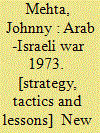

|
|
|
|
|
| Publication |
New Delhi, Himalayan Books, 1984.
|
| Description |
176p.: mapspbk
|
|
|
|
|
|
|
|
|
|
|
|
Copies: C:1/I:0,R:0,Q:0
Circulation
| Accession# | Call# | Current Location | Status | Policy | Location |
| 025211 | 956.048/MEH 025211 | Main | On Shelf | General | |
|
|
|
|
| 2 |
ID:
106265
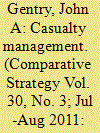

|
|
|
|
|
| Publication |
2011.
|
| Summary/Abstract |
Since World War II, the avoidance, production, and information management of casualties independent of their effects on military forces' combat capabilities have changed political/military operational environments and become major elements of wars' strategies and tactics. Many adversaries of Western states well understand the importance of casualty management. Coherent Western policy and national debates about the strategic consequences of casualties or casualty aversion are lacking, however. This article explores some of the relationships between casualties and military tactics and strategies, domestic and international politics, and operations' outcomes, using the United States as a case study.
|
|
|
|
|
|
|
|
|
|
|
|
|
|
|
|
| 3 |
ID:
133130
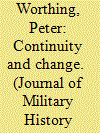

|
|
|
|
|
| Publication |
2014.
|
| Summary/Abstract |
This article analyzes the Chinese Nationalist Army at the tactical level, examining how the Nationalists deployed and employed forces to achieve victory from the earliest battles in 1925 to the first stage of the war against the Japanese in 1937-1938. It argues that certain "core characteristics" of the Nationalist Army shaped its tactics in a way that maximized its strengths and minimized its weaknesses, producing a number of important victories from 1925 to 1930. Importantly, the year 1930 marked a key turning point as new enemies and conditions led the Nationalists away from the successful tactics of the 1920s, contributing to the weaker record of the 1930s.'
|
|
|
|
|
|
|
|
|
|
|
|
|
|
|
|
| 4 |
ID:
038464
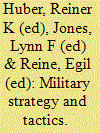

|
|
|
|
|
| Publication |
New York, Plenum Press, 1975.
|
| Description |
xi, 368p.
|
| Standard Number |
0306308894
|
|
|
|
|
|
|
|
|
|
|
|
Copies: C:1/I:0,R:0,Q:0
Circulation
| Accession# | Call# | Current Location | Status | Policy | Location |
| 015720 | 355.422/HUB 015720 | Main | On Shelf | General | |
|
|
|
|
| 5 |
ID:
121454
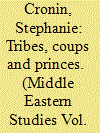

|
|
|
|
|
| Publication |
2013.
|
| Summary/Abstract |
In the decades following the First World War, countries such as Iran, Iraq and Afghanistan used the creation of a modern army as an engine for wider processes of change. Such military-led state-building followed a precedent established in the previous century by Egypt and the Ottoman Empire. In these countries, military revolutions involving the introduction of new technologies and military tactics made essential broader transformations in tax, administrative and educational structures to finance the army and provide literate manpower. In Saudi Arabia, however, no such military revolution, dragging society in its wake, took place. Military expansion was funded not by domestic taxation but by oil royalties provided by a foreign concession, recruitment remained voluntary, avoiding the administrative centralization and bureaucratic rationality demanded by conscription, while both the integrative function of conscription and the emergence of a professional officer corps were sacrificed to the imperative of sustaining the tribal and family ascendancy of the al-Saud. Saudi Arabia entered the twenty-first century having experienced not military modernization but rather military modernization in reverse, the strength of tribal and family ties and patronage not weakened but rather embedded ever more deeply within a system of patrimonial rule.
|
|
|
|
|
|
|
|
|
|
|
|
|
|
|
|
| 6 |
ID:
036791
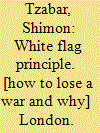

|
|
|
|
|
| Publication |
London, Allen Lane the Penguin press, 1972.
|
| Description |
150p.
|
| Standard Number |
0713902949
|
|
|
|
|
|
|
|
|
|
|
|
Copies: C:1/I:0,R:0,Q:0
Circulation
| Accession# | Call# | Current Location | Status | Policy | Location |
| 010568 | 355.48/TZA 010568 | Main | On Shelf | General | |
|
|
|
|
|
|
|
|
|